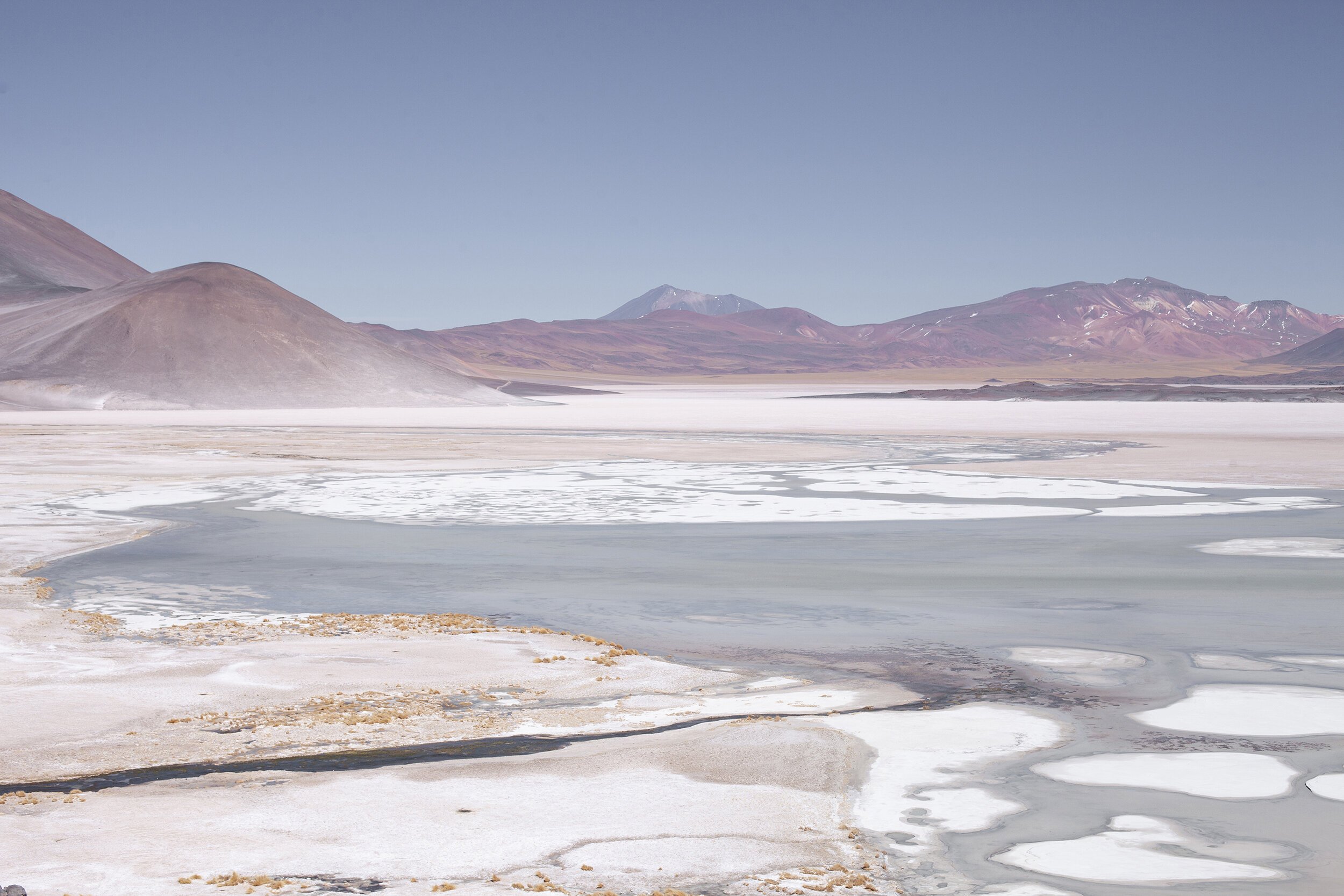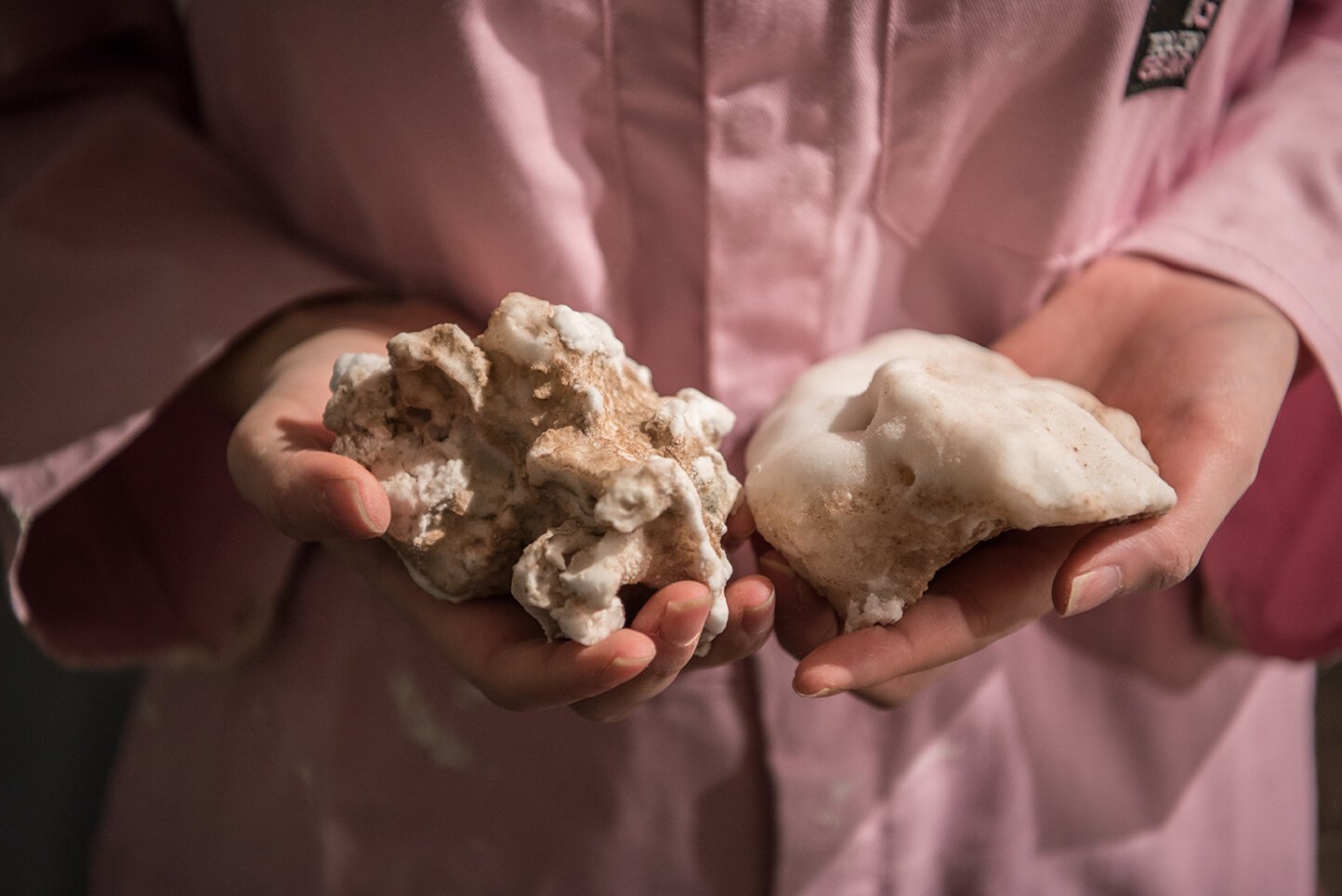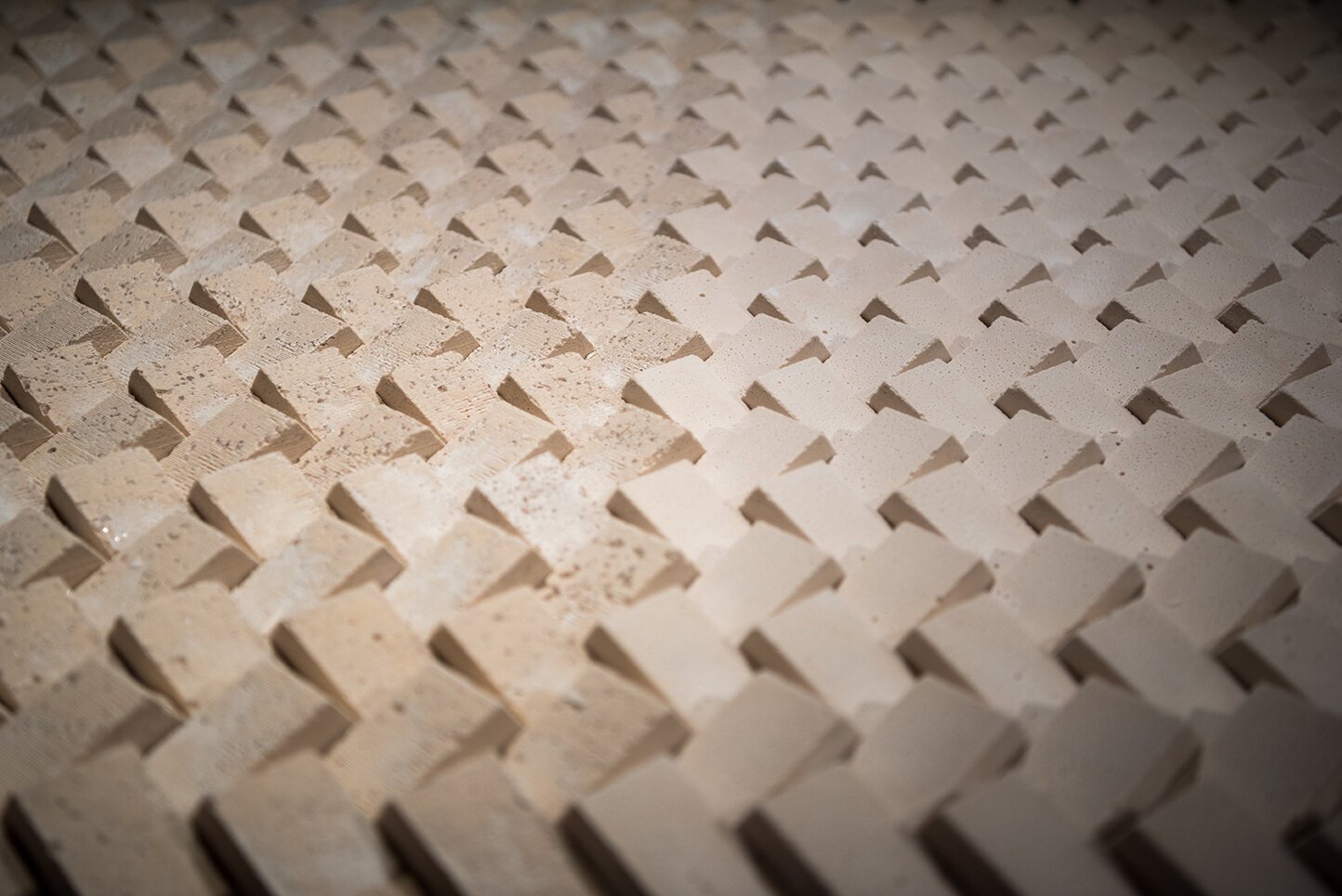Salt Imaginaries
Repurposing and Revaluing Minerals in Chile's Mining Industry
Ongoing Research by Mále Uribe Forés
Research by Mále Uribe Forés, Rethinking Mineral Life in the Atacama, Salar Grande, Tarapacá, Chile
The Atacama Desert, located in South America, is a breathtaking and unique region that covers parts of Chile, Peru, Bolivia, and Argentina. Its uniqueness is that it is the driest non-polar desert in the world, with some areas receiving less than 1 millimetre of rainfall each year. It is also one of the largest deserts globally, covering an area of approximately 105,000 square kilometres.
But the Atacama Desert is much more than just a barren landscape. Despite its challenging geographic and climatic conditions, the region is home to an array of flora and fauna that have remarkable abilities to adapt to the extreme environment. Moreover, in the desert's interior areas, oases and some valleys have been inhabited for millennia and were home to the most advanced pre-Columbian societies found in Chile, indicating a rich history dating back over 10,000 years.
Today, the Atacama Desert is a vital source of copper, gold, and lithium minerals. Nevertheless, the mining industry has significantly impacted the environment and indigenous communities of the region. While mining has played a crucial role in Chile's development and history, it has also led to significant environmental challenges.
Lithium extraction is one of the most pressing environmental challenges facing the Atacama Desert today. Although lithium is recognized as a sustainable energy solution, the extraction process has caused considerable environmental and social damage, including water resource depletion, pollution, and displacement of indigenous communities.
Mining in the Atacama Desert is not just about minerals. The region's awe-inspiring and diverse landscape, including towering volcanoes, salt flats, and vast expanses of desert, is under threat from mining activities. The ecosystem is fragile and needs to be protected.
Therefore, finding more sustainable and responsible mining practices in the Atacama Desert is vital. Proper attention paid to the ecosystem's fragility and indigenous communities makes it possible to continue to benefit from the region's rich mineral deposits without causing further harm.
“Standing in the middle of the open landscape, I was surprised to hear the loud cracking orchestra of these dry salt rocks cracking naturally everywhere, reacting to temperature and light as if they had a world of their own”
Research by Mále Uribe Forés, Rethinking Mineral Life in the Atacama, Salar Grande, Tarapacá, Chile
Mále Uribe Forés, a visionary Chilean architect, is exploring how to transform our perception of mining waste and overlooked minerals. Her research, "Salt Imaginaries" and "Rethinking Mineral Life", focus on the mineral landscape of the Atacama Desert, including salt flats, nitrate lands, salt mine pits, and lithium and iodine evaporation ponds.
Forés divided her research into two expeditions, exploring the regions of Tarapacá and Antofagasta and studying different salt crusts, microbial ecosystems, mining settlements, and mineral residues. With guidance from local experts, geologists, and researchers, she documented the landscape, collected samples, and discussed minerals' beauty, the Andes' history, and indigenous cosmologies.
Forés views minerals as natural and cultural carriers of history and local narratives that precede humans and all life forms. Although minerals must be extracted to support our society's lifestyles, urgent revisions are needed in the material productive systems created around them, where minerals are reduced to commodities subject to technological and economic value only. Forés' work highlights the significant impact that these resources have on local communities and the environment. It also underscores the potential for minerals, such as salt, to be repurposed and revalued rather than treated as waste.
Research By Mále Uribe Forés, Salt Imaginaries, Designers In Residence, The Design Museum, London
“I see minerals as natural and cultural carriers of histories and local narratives that precede humans and all forms of life. They are creators of the universe, the structures of our bones, the mineral of our blood, and the source of our most valued tools and devices. Although we need to extract them to carry on with the lifestyles we have created as a society, we need to urgently revise the material productive systems that we have created around them, in which minerals are reduced to commodities subjective to technological and economical value only. As a result, we end up with destroyed landscapes with tons of mineral ‘residues’ that are diminished to useless pieces of matter, with no potential or value.”
Mining Waste, Research by Mále Uribe Forés, Rethinking Mineral Life in the Atacama, Chile
During her residency at the Design Museum in London (2019), Forés developed her research, showcasing impactful results through an installation, a film, and a publication. The critical essay in the publication reflects on the significance of minerals. At the same time, the installation and film bring attention to the hidden stories and histories intertwined with the mineral landscapes of the Atacama Desert.
By focusing on the minerals and extractive processes of the region, Forés sheds light on the rich cultural and geological histories that are often overlooked or forgotten. Her research highlights the significant impact that these resources have had on local communities and the environment. It also underscores the potential for minerals, such as salt, to be repurposed and revalued rather than treated as waste.
Forés' work presents a compelling case for reimagining our approach to mining and mineral landscapes. As we strive for a more sustainable future, her research is a powerful reminder that overlooked and disregarded materials may hold the key to the solutions we seek.
Research by Mále Uribe Forés, Salt Imaginaries, Designers in Residence, the Design Museum, London
Research by Mále Uribe Forés, Salt Imaginaries, Designers in Residence, the Design Museum, London
In collaboration with Albemarle and the Engineering department of UC in Chile, Forés plans to create a permanent mural for the desert's local community and develop technologies that will help bring new narratives to these forgotten materials. The research aims to demonstrate that value is a cultural construct and that extractive systems can be more conscious, circular, and efficient when addressed in local and multidisciplinary ways.
In conclusion, Mále Uribe Forés' "Rethinking Mineral Life" and "Salt Imaginaries" projects provide a fresh perspective on mining and mineral landscapes, emphasizing the importance of environmental responsibility and cultural awareness. Her work challenges us to reimagine how we view and value these resources and revaluing them.
The Salt Imaginaries exhibition, Gallo Gallery 2022, Chile
The Salt Imaginaries exhibition, Gallo Gallery 2022, Chile
INFO
Mále Uribe Forés
Photography by Mále Uribe Forés
Short documentary film about the project Salt Imaginaries, developed at the Design Museum, London 2019-2020.
By Studio Mále
Camera and voice by Estudio Ibanez
Sound design by Barney Kass
Words
Nina Zulian
Sources
https://www.washingtonpost.com/photography/interactive/2022/lithium-mining-electric-cars-chile/








